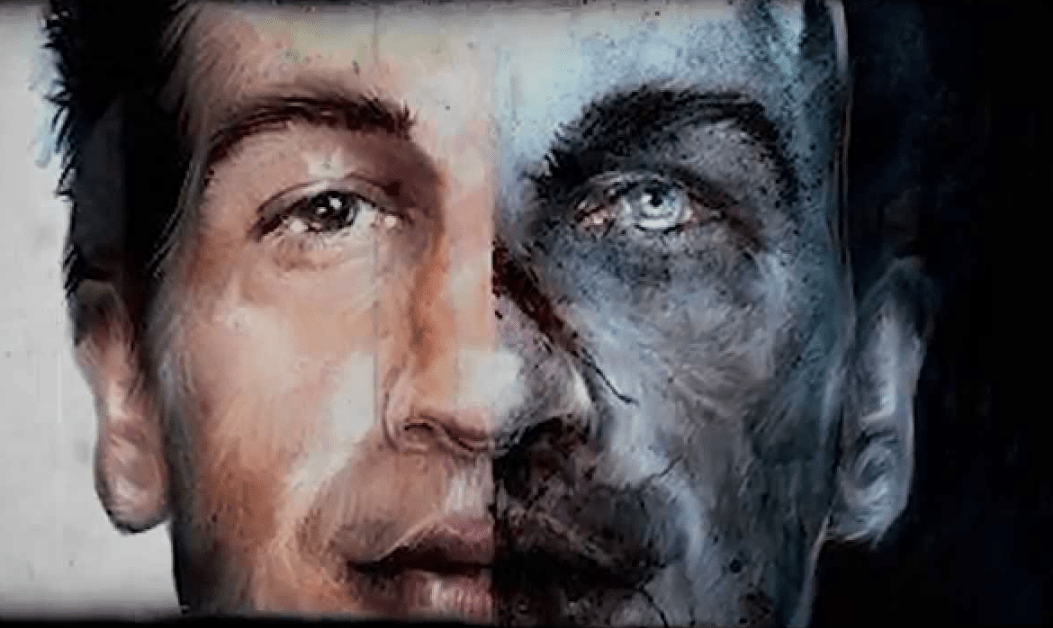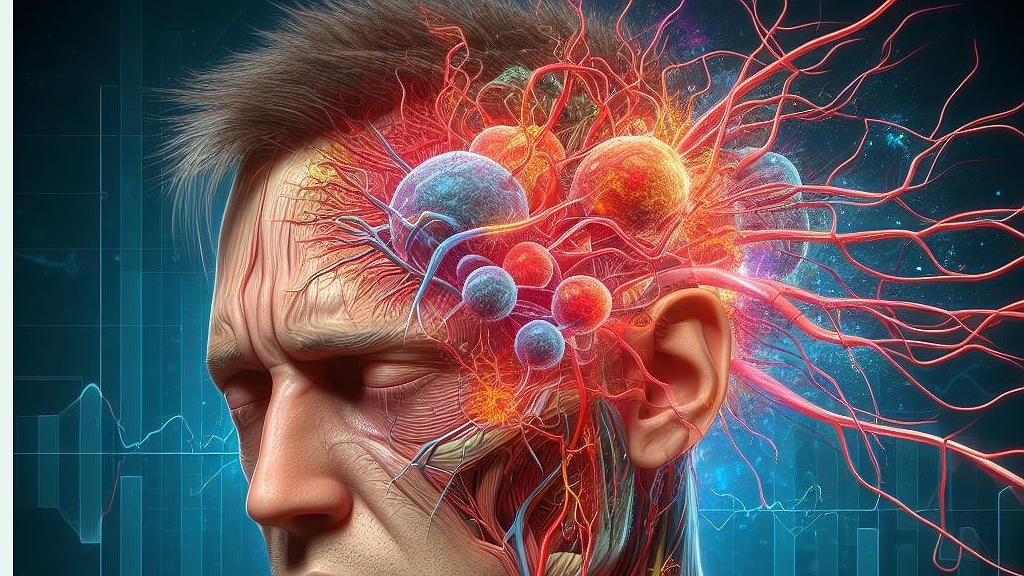Hello readers! Attached here in this blogpost I’d my Medicine and Health Conditions Assessment for this term. Hope you find in informative and helpful for learning more about these kinds of topics.
Walking Corpse Syndrome / Cotard’s Syndrome – Toroa Passion Area
“Walking Corpse Syndrome”



“How It Affects The Different Parts Of Hauora” / “Long Term and Short Term Effects”
| Physical | Mental | Emotional | Social | Spiritual |
| They harm themselves physically. – LT | It makes them delusional that they are dead. – LT | They experience depression. – LT | They become less social. -LT | It leads them away from their spiritual beliefs. – LT |
| They experience fatigue. – ST | It makes them believe that they are missing parts of their body such as organs, blood, etc. – LT | They develop anxiety about almost everything. – LT | They don’t have the energy to get along with other people. – LT | It makes them unable to do their spiritual practices. – LT |
| It lessens their ability to take care of themselves. – LT | It makes them have the thought of ending their lives. – LT | They experience confusion if they are normal or different from others. – LT | They lack interest in participating in many activities. – ST | |
| They experience weight loss. – LT | They isolate themselves from other people. – LT |
“Questions”
1. What is the Walking Corpse Syndrome
- Walking Corpse Syndrome, also known as the Cotard’s Syndrome is a condition where a person who suffers from it believes that they are dead or dying. This condition gives them a delusional mind that they are missing a body part or don’t even exist.
2. How does a person get Walking Corpse Syndrome?
- The cause of this condition is barely known. According to research this condition is developed when a person suffers from a mental health illness and psychotic disorders.
3. Are you able to recover from it? If ever, how?
- Yes, walking corpse syndrome can be cured with proper therapy treatments from healthcare professionals.
“Interesting Fact”
- Cotard’s syndrome is a rare mental disorder with only about 200 cases known world wide.
School Strike 4 Climate
- What is climate change?
- Climate change is the long term shifting or changing of the temperature of the earth; usually caused by pollution, resulted by the improper acts of humans when it comes to nature.
- What is causing climate change? (~100 words)
- There are a lot of causes of climate change in our planet earth. Primarily, climate change is usually caused by humans, though some of the causes are natural. Causes of climate change are: Burning of fossil fuels such as coal, gas and oil. Burning fossil fuels produce heat. Additionally, it generates greenhouse gas emissions, acting like a very thick blanket wrapping the earth, trapping all the gases. Climate change is also caused by pollution, done by humans. Greenhouse effects raise the temperature by absorbing heat from the sun that radiates from the Earth’s surface, trapping it preventing it from escaping.
- In 2019, the “school strike 4 climate” movement started in Aotearoa. It’s still continuing today. Why do ākonga (students) throughout Aotearoa and globally want to go on strike from school and protest? (~150 – 200 words)
- Tens of thousands of students around Aotearoa and all over the world wanted to go on strike from school and protest about climate change because they want to address this issue and get immediate action from the government. They believe that instead of going to school, participating in the “School Strike 4 Climate” is more important since they have finally realized that climate change is one thing that would lead to our planet’s death. Consequences of the change in climate such as loss of biodiversity, rising temperature, flooding, desertification, etc. Will surely make a negative Impact on us if we won’t do anything about it. They have thought that their education is indeed important, but so as saving the environment and the planet that we are living in by using their voice to open closed eyes and minds of people who do not care about this matter. Young people deserve a better future, and every year they are demanding for it. By using their voices and participating in the strike, they can save themselves and our planet from dying. By raising these concerns, we can all be aware of what is happening around us and come up with a solution where all of us can be a one big group solving the crisis that we ourselves, humans have made.
- You must also include some photos showing the school strike 4 climate.




Speech Reflection
During my speech last week, I can say that everything went well. I managed to go through my speech even though I had a few mispronunciation of words and forgot some of the sequence of my speech; Even though, I still memorized the speech, without needing to look at my paper while I’m talking In front of the class. Nothing bad happened and nothing didn’t go well because I delivered the speech flawlessly; maintaining my voice range and eye contact with the audience. Next time, I would try and improve it by not making any mistakes and not forgetting the queue of my speech.
Safety and Medicine
“Main Points”:
- How to take medication safely. – In order to take medication safely, we must practice the safety measures of taking medicine to ensure that we are safe once we take them.
- How to store medicine safely. – Keep the medicine in a cool, dry place to prevent it from going bad, keep it away from children and make sure that it is not exposed to air to avoid microbes and particles entering the medicine.
- Medication safety for children. – Medication must be stored away from children’s reach, to avoid them consuming it, causing them to be overdosed.
- What to do with expired medicine. – Expired medicine must be disposed immediately to prevent people from consuming it.
- Taking medicines the wrong way would lead to further damages in your body. – When we take medicine the wrong way such as (Overdosing, Not reading the label, taking unnecessary medicine), it would have numerous negative impacts it will have in our bodies.
“How Can a Teenager Be Safe in Drinking Medicine”
- Read the medicine label.
- Know the right amount of medicine you should take.
- Dispose expired medicine immediately.
- Never take medicine not prescribed by a health professional.
- Ask questions or assistance if needed.
- Store the medicine in a cool, dry place suitable for it to not go bad.
- Never take any medicine given to you by other people
Holidays Blogpost
My Holiday Break:
I did not do anything much during the holidays. My holiday break was kinda boring since I was at home doing my hobbies such as writing and watching movies. I also go out every weekend with my family so we won’t get bored at home. I also got to catch up with my friends in the Philippines and ended up talking for hours.
My Goals:
My Goals for this term is pretty much the same as the last term, and that is improving in my studies and focusing on my achievements and goals so that I would not struggle in the next school year.
MELIP Term 3 Reflection
For the last two weeks of term three, the activity that we did was writing a persuasive letter for the principal about something that we want the school to be convinced of. The learning intentions for our activity were; To identify the structure of a persuasive text, To be familiar with the language features of a persuasive text, and to write a simple guided persuasive text. For me, the most challenging part of this activity was coming up with a topic because I find thinking of a topic to write about really complicated as I have spent a lot of time thinking of a topic aside from allowing the use of phones during break times. I solved this problem of mine by asking our teacher for some topic suggestions.
I have learned a lot from the activity that we did. I have learned how to write an effective and convincing persuasive letter that would help me for future purposes. I have also practiced the writing skills that I need in order to write a persuasive text. I believe that I have achieved all the learning objectives as I was successful in writing a letter to the principal with all my learning from the past lessons applied to it. For me to do better next time, I will read more persuasive texts, as I believe that I will learn a lot of things especially on how to do them by reading some of its examples. I can also improve by watching tutorials by professionals on how to write an effective persuasive text.
In all, I have learned a lot of things, especially in writing persuasive texts. I have practiced some writing skills that will be helpful when I need to write these kinds of text. I can also apply my learning in real life by teaching my peers that lack the knowledge in writing. So overall learning how to write will not just benefit myself but others as well.
Debate Reflection – MELIP 2
The activity we did last week was a debate. We were able to showcase our skills and the research we did during the fast few weeks to make the debate happen. The learning intentions for this activity are; to be able to present and counter arguments and to be able to perform different roles of a debating team. The most challenging part of this activity for me was the research about our assigned topic.
During our activity, I have learned about the debate skills that I can use for a better performance next time we have another debate. For me, I think that I was able to achieve the learning objectives, as the debate was successful and had great outcomes. When it comes to mistakes I had a slight mental block and forgot the sequence of the sentences and paragraphs that I will use. In order to do better next time, I will spend my free time researching and watching debate videos so I can learn a lot of new things.
One thing that I have learned in this debate that I can use in real life situations is to always be attentive and have good listening and communication skills. With these skills I can improve my communication skills, I can also teach younger people how to debate so they can have some ideas on how to debate in the future.
Testing pH
1. Aim: why did we do the experiment?
- We did the pH testing experiment in order to find out the pH levels of different solutions.
2. Equipment: what did you use for your experiment?
- Spotting Tile
- Universal Indicator
- Safety Glasses
- Pipette
- Litmus Paper (Blue and Red)
- Household chemicals.
3. Method: what steps did you complete to get your results for your experiment? Make sure your steps are numbered (like a recipe)
- Add a few drops of the household chemicals to the spotting tile (if the chemical is powdered, mix it with a few drops of water before testing.)
- Test the solutions by using litmus paper
- Test each chemical with a few drops of universal indicator to know the pH level of the solution.
4. Results: Pictures + link to your results table
5. Discussion: starting discussion questions (you can include more detail)
-
- The reason why the different household chemicals are that each has a different pH level; It is either acidic or basic based on what the color of the litmus paper turned into. In order to know if the solution is acidic or basic using a litmus paper is if you use a red litmus paper and it turns to blue then the solution is basic, but if the red litmus paper remains red then the solution is acidic. The universal indicator is more useful than the litmus paper because it doesn’t only tell if the solution is acidic or basic but it also tells how acidic or basic a solution is.
6. Conclusion: starting conclusion questions (you can include more detail)
-
- Our experiment did work, since we were able to identify if a solution is an acid or base. We were also able to see how acidic and basic the different household chemicals are. To improve our science next time, it is best to do research about the topic and the equipment that will be used for the experiment.
Drug Research
| DRUG | CONSEQUENCES | WHICH PART OF THE HAUORA DOES IT AFFECT? | PERSONAL, INTERPERSONAL OR SOCIETAL? | SHORT OR LONG TERM |
| Alcohol | Alcohol poisoning
Alcohol Intoxication Liver cancer/failure Diabetes Infertility Stroke Road accidents |
Physical
Physical Physical Physical Physical Physical Physical |
Short term
Short term Long term Long term Long term Long term Short term |
Personal
Personal Personal Personal Interpersonal |
| Pain Killers | Liver and Kidney failure
Problems with blood circulation Drowsiness Nausea Slowed breathing and heart rate Depression |
Physical
Physical Physical Physical Physical Emotional / Mental |
Long term Long term Short term Short term Long term Long term |
Personal
Personal Personal Personal Personal |
